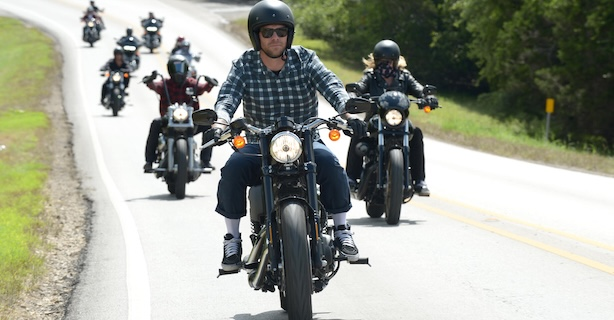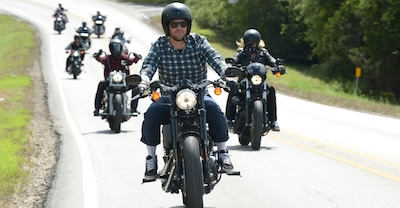Riding a motorcycle isn’t just about getting from A to B. It’s about the experience, the freedom, and, yes, the responsibility.
Two-lane roads offer some of the most scenic and thrilling rides for motorcyclists. However, these roads also demand sharp decision-making and understanding proper lane positioning to ensure every ride is not only exhilarating but also safe.
Your lane position plays a bigger role than you might think. It’s not just about staying in your lane; it’s about being seen by other drivers, avoiding hazards, and giving yourself room to react.
Whether you’re a new rider or a seasoned one, fine-tuning your approach to lane positioning can make every ride safer and more enjoyable. So, let’s look at what you need to know about motorcycle lane position strategies for two-lane roads.
UNDERSTANDING LANE SECTIONS (LEFT, CENTER, RIGHT)
Your lane position determines where you ride within your lane. On a standard two-lane road, each lane can be divided into thirds or three imaginary sections: left, center, and right. These sections aren’t marked but allow you to adapt based on traffic, road conditions, and visibility.
Using lane positioning effectively helps optimize visibility and reaction time to avoid hazards. Each position offers unique benefits.
Position One: Left Section of Lane
Left lane position maximizes visibility to oncoming traffic and makes you noticeable to vehicles ahead. While not inclusive of all situations, the left position is ideal for:
Cars backing out of driveways.
Passengers exiting parked cars.
Avoiding debris on the side of the road.
Preparing for and approaching right-hand turns.
Straight roads where oncoming traffic visibility is critical.
Caution: Be mindful of vehicles drifting into your lane, especially on narrow or poorly marked roads.
Position Two: Center Section of Lane
Riding in the middle provides balanced visibility and equal spacing from hazards on both sides. Use the center lane position when:
Flow of traffic is steady and predictable.
The road is straight and clear 1) to see and be seen at the crest of a hill and 2) in curves and at intersections when there is limited visibility.
Caution: Watch for oil, debris, or slippery patches that often accumulate in the center.
Position Three: Right Section of Lane
The right lane position is useful for avoiding obstacles on the left or center. It’s also effective for:
Improves visibility in left-hand curves.
Maintaining visibility near parked cars or road shoulders.
Increases visibility at an intersection with a limited view from the left.
Caution: Stay alert for vehicles pulling out of side streets or driveways, as they may not see you.
HOW TO CHOOSE THE BEST LANE POSITION
When deciding where to ride, focus on three key factors:
Safety: Select a position that minimizes exposure to hazards, such as potholes or oncoming vehicles.
Visibility: Ensure other road users can see you clearly, especially at intersections or when riding near large vehicles.
Flexibility: Maintain enough room to maneuver around obstacles or react to sudden changes in traffic.
No single position works for every traffic situation. Stay alert and continuously evaluate your surroundings to adjust your lane position as needed. Traffic, road conditions, and weather can change rapidly, so flexibility is critical to staying safe.
ADAPTING LANE POSITION BASED ON SCENARIOS
Choosing the best lane position isn’t just about personal preference - it’s about adapting to the conditions around you. Key factors include:
Traffic flow - Is the road busy? Choose a position that keeps you visible and avoids blind spots.
Road conditions - Watch for potholes, loose gravel, and other hazards. Adjust as needed to keep your ride smooth.
Weather conditions - Rain or foggy riding conditions can impact visibility and traction. Stick to positions that provide additional space and sightlines.
Intersections - Be extra cautious here. Position yourself where cross-traffic drivers can spot you early.
Large vehicles - Never stay in the blind spots of trucks or buses. If you can’t see their mirrors, they can’t see you.
Stopping - Position yourself to maintain a clear line of sight to traffic conditions ahead and keep a safe distance from the vehicle in front of you. This allows you to anticipate changes and stop smoothly if needed.
By factoring these in, you can make quick, confident decisions that will keep you safer on the road.
COMMON MISTAKES AND HOW TO AVOID THEM
Even experienced motorcyclists can develop habits that compromise safety.
One common mistake is failing to adapt lane position dynamically. Motorcycle riders often stick to one dominant lane position for too long, reducing their ability to respond to changing road conditions, traffic, or visibility issues.
Another frequent error is riding too close to vehicles ahead, leaving insufficient stopping distance. This reduces reaction time and increases the risk of a rear-end collision, especially in heavy traffic or at intersections.
Additionally, some riders underestimate the importance of avoiding blind spots and staying in positions where road users and drivers of larger vehicles like trucks and buses can't see them.
Overconfidence in familiar routes can also lead to overlooking hazards, such as debris, potholes, or road shoulder drop-offs. To avoid these pitfalls, riders should develop a habit of continuous situational awareness.
Regularly scan the road, adjust lane position as needed, and maintain a safe following distance.
LANE POSITIONING FOR EMERGENCIES
In an emergency stop, your road position could be influential in avoiding unplanned incidents:
Be Aware of Hazards in Center of the Lane: Oil and debris often accumulate here, making it more slippery during hard braking.
Keep an Escape Route: Avoid stopping directly behind vehicles where you may be rear-ended. Offset your position slightly to the side to leave room to maneuver if needed.
To build confidence in hazardous situations, practice these techniques in controlled environments:
Simulate sudden stops by riding toward a marked point and performing a quick stop using both brakes and using progressive braking pressure, adjusting your lane position before stopping.
Practice swerving around cones to simulate debris or merging traffic conditions.
Experiment with adjusting your speed and position while simulating a tailgating situation to build muscle memory for staying calm under stressful or panic situations.
PRACTICAL LANE POSITIONING TIPS AND BEST PRACTICES
When it comes to riding safely, mastering the three S’s - Space, Surface, and Sight - is key.
These aren’t just tips; they’re the habits that keep you visible, in control, and ready for whatever the road throws your way.
Space: Keep a buffer. Always leave enough room to react, whether it’s braking suddenly or swerving to avoid something. Crowding cars on either side limits your options, so maintain your space.
Surface: Always scan the road. Potholes, oil slicks, and gravel can appear suddenly. Adjust your position early to avoid them without losing control.
Sight: Make yourself visible. Don’t ride in blind spots and always position yourself where other drivers can easily see you. Keeping your headlight on during the day is a simple way to grab attention, too.
FINAL THOUGHTS ON LANE POSITIONING
Riding a motorcycle is all about the balance between freedom and control, excitement and responsibility.
Your decisions about lane positioning are small adjustments that can make a huge difference. By staying aware, flexible, and proactive, you can turn a potentially risky ride into a smooth, enjoyable experience.
Practice these strategies every time you hit the road, and they’ll soon feel as natural as shifting gears. Ultimately, it’s not just about getting there; it’s about making sure you enjoy the ride safely and confidently.

Discover the essential motorcycle hand signals you need to know to communicate effectively with other vehicle operators when riding. Learn more!
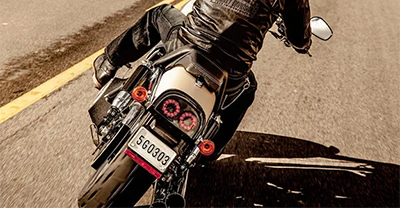
Understanding the principles of countersteering will help you become a rider who’s prepared for any situation. Learn more!
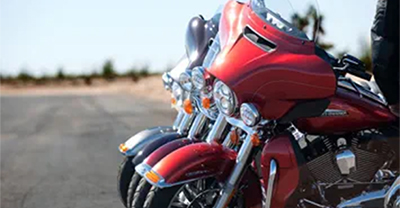
Taking a course is the best way to learn how to ride a motorcycle at slow speeds, but this multi-step approach to maneuvering slowly in tight spaces will help.
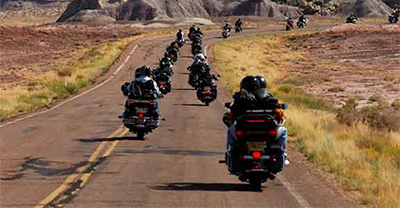
Riding in a group presents special challenges. These basic guidelines and group riding tips can help make sure your next outing is safe and enjoyable for all.

